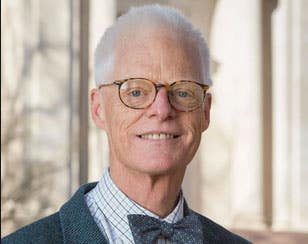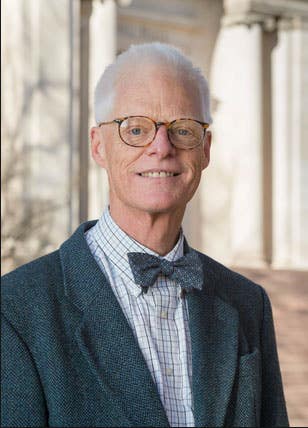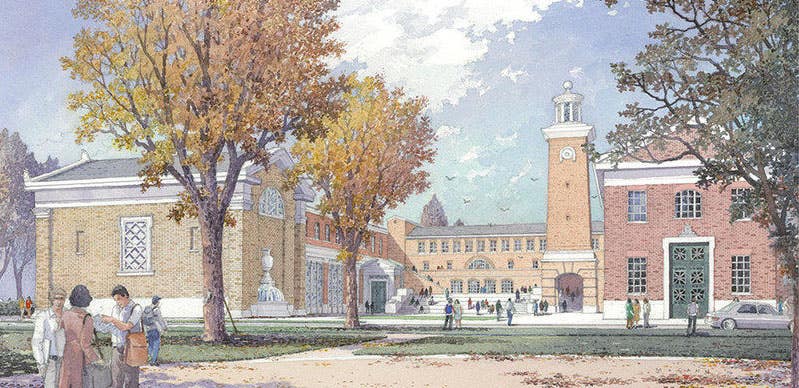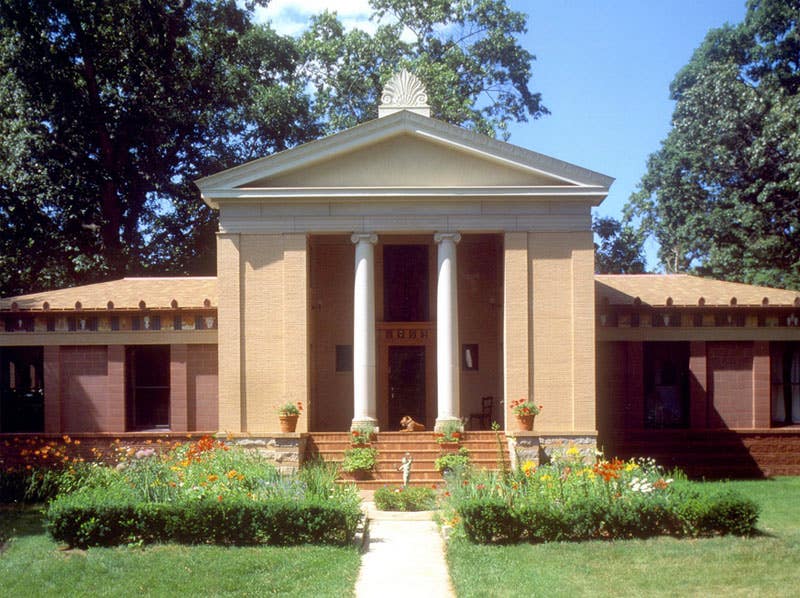
David Brussat
Assertively Classical: Thomas Gordon Smith at Notre Dame




“Positively Classical” is the title of Gordon Bock’s profile of Thomas Gordon Smith in the latest issue of Traditional Building. Back in the 1990s, Smith led a revolution at the University of Notre Dame’s School of Architecture, removing it from the College of Engineering and replacing its modernist curriculum with a classical curriculum. Since then, Notre Dame has led the classical revival by producing architects capable of traditional design at the highest level of classical virtuosity.
Smith is too polite to call it a revolution. In the TB profile he even dismisses the idea that the curriculum was really new. That is why I have entitled this blog post “Assertively Classical” - I had contemplated “Aggressively Classical” - in contrast to “Positively Classical.” Positive can connote politeness. That may well fit in with Smith’s personality and modus operandi, and that of most practicing classicists, but it will not serve new circumstances that may enable traditional architecture to challenge modern architecture’s control of the field’s professional establishment.
One interlude in Smith’s career was not mentioned by Bock. In 2006, President Bush appointed the professor to be the chief architect of the General Services Administration, the huge and largely unknown federal agency that is in charge of all federal buildings, including the design and construction of new ones, After Smith’s selection, the architectural establishment erupted in anger and bullied Bush into withdrawing the appointment. Classicists barely uttered a peep in Smith’s support, and he accepted, with a becoming gentility, the loss of a post that could have been an effective tool in leveling the playing field of American architecture.
For years, the world’s leading New Urbanist, Andres Duany, has warned that modern architecture fights, and fights toughly, even unfairly, to maintain its hold on the architectural establishment. Classicists, who specialize in architecture that is not in your face, are temperamentally disinclined to fight, let alone fight dirty. Fortunately, traditionalists do not need to fight dirty because, unlike the modernists, their cause is just and they have a clear majority in the hearts and minds of the public.
Only last year, for example, a study by Tulane University found that homeowners rebuilding in New Orleans after Hurricane Katrina chose traditional over modernist design for new houses by a factor of 14 to 1. Anecdotal and scholarly evidence that the public prefers houses that look like houses and churches that look like churches, etc., is longstanding and extensive. Evidence to the contrary is, so far as I am aware, entirely nonexistent. And yet because of the unbalanced coverage of architecture in the media, about the only thing the public has heard about rebuilding in New Orleans is the goofy modernist neighborhood designed by the starchitects gathered through actor Brad Pitt’s “Make it Right” organization.
A telling incident from Smith’s days in architecture school was told by his wife, Marika, to TB’s Bock:
“A friend brought one of his professors to see some of Thomas’s drawings for little hypothetical houses, one of which Thomas had labeled Doric House.”As the story goes, the professor was neither impressed nor pleased. “‘Who gave you permission to design a Doric house?’she inquired, as if it was something terrible.”Adds Smith with a chuckle, “As far as the professor was concerned, these ideas were opening a Pandora’s box. Better they should stay safely in the textbooks and not influence anyone.”
And that is pretty much how things have remained.
Aside from Notre Dame and a handful of smaller classical programs - including new ones at the University of Colorado at Denver, Catholic University and, lately, the College of Charleston - the number of classical curricula in America, Europe and elsewhere is microscopically small. Many practitioners, fearing they are locked out of commissions for institutional, commercial and civic work, focus on commissions to design fancy houses for rich clients. Many accept scraps of publicity from the table of the American Institute of Architects, or look on in horror as their leading organization, the Institute of Classical Architecture & Art, contemplates removing the word “advocacy” from its mission statement. Meanwhile, the leverage offered in the style wars by a supportive public remains underutilized as the average citizen, convinced that architecture they like will never get its act together, tunes out even the minimal opportunities offered by local development processes to influence building design in their own cities, towns and neighborhoods.
It is time for the classical revival to step out of its comfort zone.
The “new circumstances” I referred to earlier may enable traditional architecture to recapture its rightful control of the architecture establishment. I play second fiddle to no one in my disdain for the character of Donald Trump, but if his promise to “drain the swamp” is genuine, then the threat he poses to the governing establishment can also represent a threat to the architecture establishment. “Make America Great Again” can mean “Make America Beautiful Again.” Because architecture is nonpartisan, it can be bipartisan, akin to proposals for a federal program to rebuild the nation’s infrastructure. Architecture can make visible - literally visible - how the political establishment listens to and acts upon the voice of the people. George Washington and Thomas Jefferson understood this perfectly. And the voice of the people has been even more fully ignored by the architectural establishment.
It is impossible to know whether the style wars of architecture are on the radar of the president-elect. But if he has a clue about the importance of symbolism in selling an agenda, then perhaps he can pick up the ball that Bush dropped and nominate Thomas Gordon Smith - or another leading light of the classical revival - as chief architect of the GSA. That would be a commanding first step, but other steps can be imagined to make America look great again. Penn Station is one. The Gehry Ike is another. Unlike most problems facing the nation, the solution to our dreary civic environment is clear, vast public support for change exists, and, as a policy, it may be accomplished almost as easily as flipping on a light switch.
For 30 years, David Brussat was on the editorial board of The Providence Journal, where he wrote unsigned editorials expressing the newspaper’s opinion on a wide range of topics, plus a weekly column of architecture criticism and commentary on cultural, design and economic development issues locally, nationally and globally. For a quarter of a century he was the only newspaper-based architecture critic in America championing new traditional work and denouncing modernist work. In 2009, he began writing a blog, Architecture Here and There. He was laid off when the Journal was sold in 2014, and his writing continues through his blog, which is now independent. In 2014 he also started a consultancy through which he writes and edits material for some of the architecture world’s most celebrated designers and theorists. In 2015, at the request of History Press, he wrote Lost Providence, which was published in 2017.
Brussat belongs to the Providence Preservation Society, the Rhode Island Historical Society, and the Institute of Classical Architecture & Art, where he is on the board of the New England chapter. He received an Arthur Ross Award from the ICAA in 2002, and he was recently named a Fellow of the Royal Society of the Arts. He was born in Chicago, grew up in the District of Columbia, and lives in Providence with his wife, Victoria, son Billy, and cat Gato.








